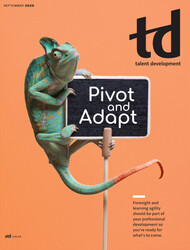TD Magazine Article
Member Benefit
Employee Experience or Employee Engagement?
Rather than viewing it as an either-or proposition, go for both.
EJ
By
Tue Sep 01 2020

Loading...
"We need more employee engagement!" "No, we need a better employee experience!" Do those statements sound familiar? Is your organization focused on improving only one of those areas? If so, that is mistake number 1. The second mistake is viewing employee experience (EX) and engagement as isolated components independent of one another. It's time for those to be mistakes of the past.
You've Reached ATD Member-only Content
Become an ATD member to continue
Already a member?Sign In

